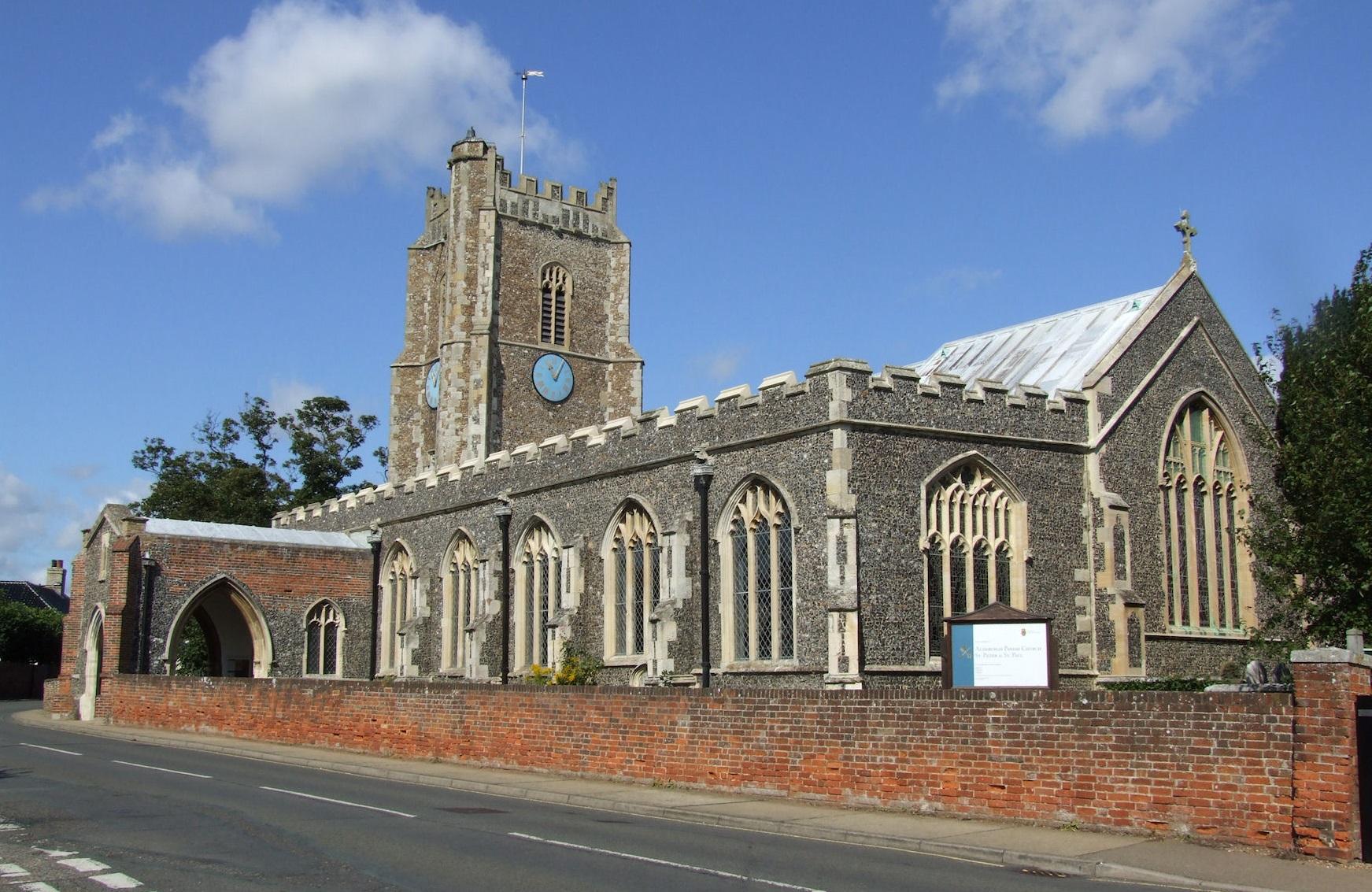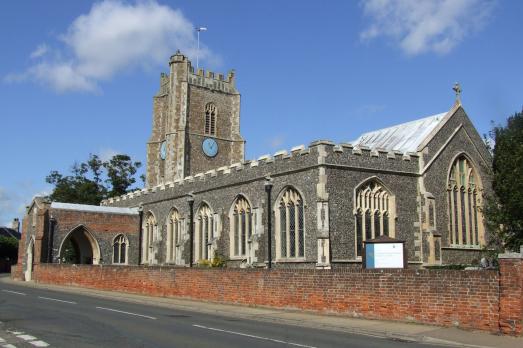There was a church here at the time of the Domesday Book, but the current building is largely an early 16th century building, with an earlier 14th century tower. There may have been an even earlier Saxon church at Aleburgh, but if so, only limited traces of that building now remains in the altered roofline of the current church.
Internally, the oldest feature of the church is the font, which dates to around 1320. You can see that several of the carved panels have been defaced; this destruction took place in 1643, when a local man named Thomas Johnson aided the famed iconoclast William Dowsing in destroying '20 cherubim and 38 pictures' as well as taking a sword to the carvings on the font. Johnson is buried in the floor before the altar, a strange honour perhaps, for a man who destroyed much historic architecture at Aldeburgh, but such was life during the Reformation.
There is a copy of an original King James I 'Black Letter Bible', and several interesting memorial brasses, plus a very well-preserved oaken parish chest, a church key dated prior to 1638, and a beautifully carved wineglass pulpit.
Before Johnson and Dowsing were active, the church was the scene of a much happier event. In 1573 a group of travelling actors gave a performance here. The troup was known as the Earl of Leicester's Men, and they would later count among their number a certain young actor and playwrite called William Shakespeare.
Other famous names associated with the church include the poet George Crabbe, a native of Aldeburgh. Crabbe (1754-1832) wrote the poem 'The Borough', which later served as the inspiration for Benjamin Britten's opera Peter Grimes. Crabbe served as curate and is commemorated by a fine bust near the organ. Britten himself lived at Aldeburgh for many years and is commemorated in a striking memorial window. His grave is in the churchyard, as is that of Peter Pears, who, with Britten, founded the Aldeborough Festival for which the town is famous. Also in the churchyard is the grave of Imogen Holst, daughter of composer Gustav Holst.
There is a new plaque to Elizabeth Garrett Anderson, who was brought up in Aldeburgh from the age of 5. After her remarkable life as the first British woman to qualify as a doctor and a physician she retired here too, spending the last 15 years of her life living close to the church which she attended regularly. She also, of course, became the pioneering mayor of Aldeburgh, the first female mayor in the country. The church contains memorials to several of the Garrett family including Elizabeth’s father Newson, his wife Louisa and their son Edmund.


